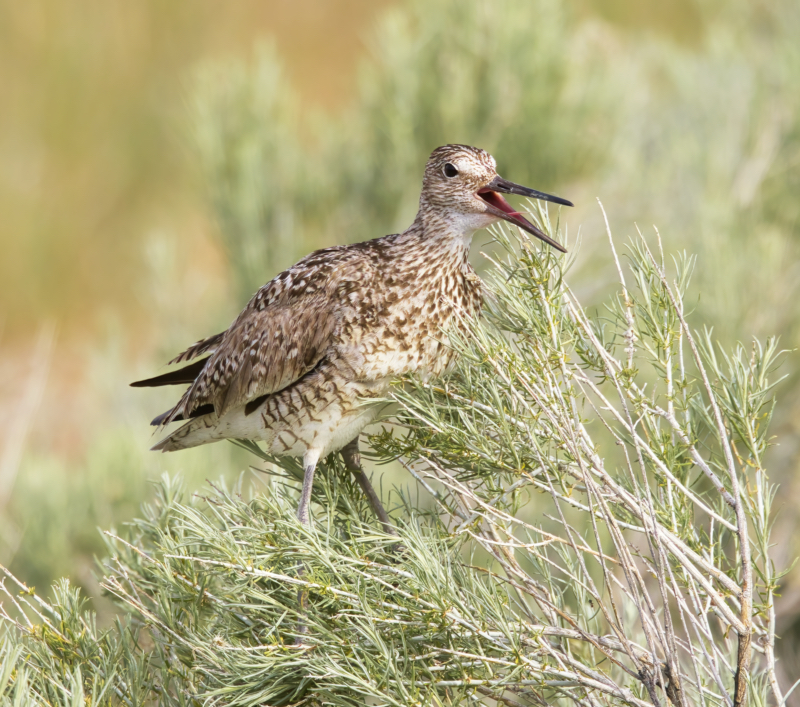During my recent wildlife photography trip to Antelope Island State Park in Utah, I was lucky enough to spot and photograph a beautiful Willet. As I was driving along the roads within the park, I noticed the bird nestled in the brush, and immediately pulled over to capture the moment.

Using a beanbag draped over the open window of my pickup truck, I was able to rest my camera and lens and get a photo of the Willet. This particular species of bird is known for its distinctive long and curved beak, which it uses to probe the mud and sand for small invertebrates and crustaceans.
Willet’s can be found in coastal regions and are often seen foraging in shallow waters along the shorelines. Their grey-brown feathers and distinctive black and white wing pattern make them a beautiful and unique subject for wildlife photography.
Photographing this Willet was truly a highlight of my trip, and it serves as a reminder of the incredible beauty and diversity of wildlife that can be found in our parks and natural habitats.

Willet Facts:
- The Willet has a distinctive, piercing call that is often described as a “pill-will-willet”.
- They are known for their unusual feeding behavior, where they use their long beaks to probe deep into the sand for small prey, such as worms and crabs.
- The Willet is a long-distance migrant, with some individuals traveling up to 7,000 miles between their breeding and wintering grounds.
- In the winter, Willets can be found along the coasts of Central and South America, as well as the Gulf of Mexico and parts of the Caribbean.
- Willets are one of the largest sandpipers in North America, with a wingspan of up to two feet.
- They have a unique flight pattern where they flap their wings several times and then glide low over the water or ground, making them easy to spot and identify.
- The Willet has a lifespan of up to 15 years in the wild.
- In some regions, the Willet’s population has declined due to habitat loss and hunting, leading to conservation efforts to protect this species.
